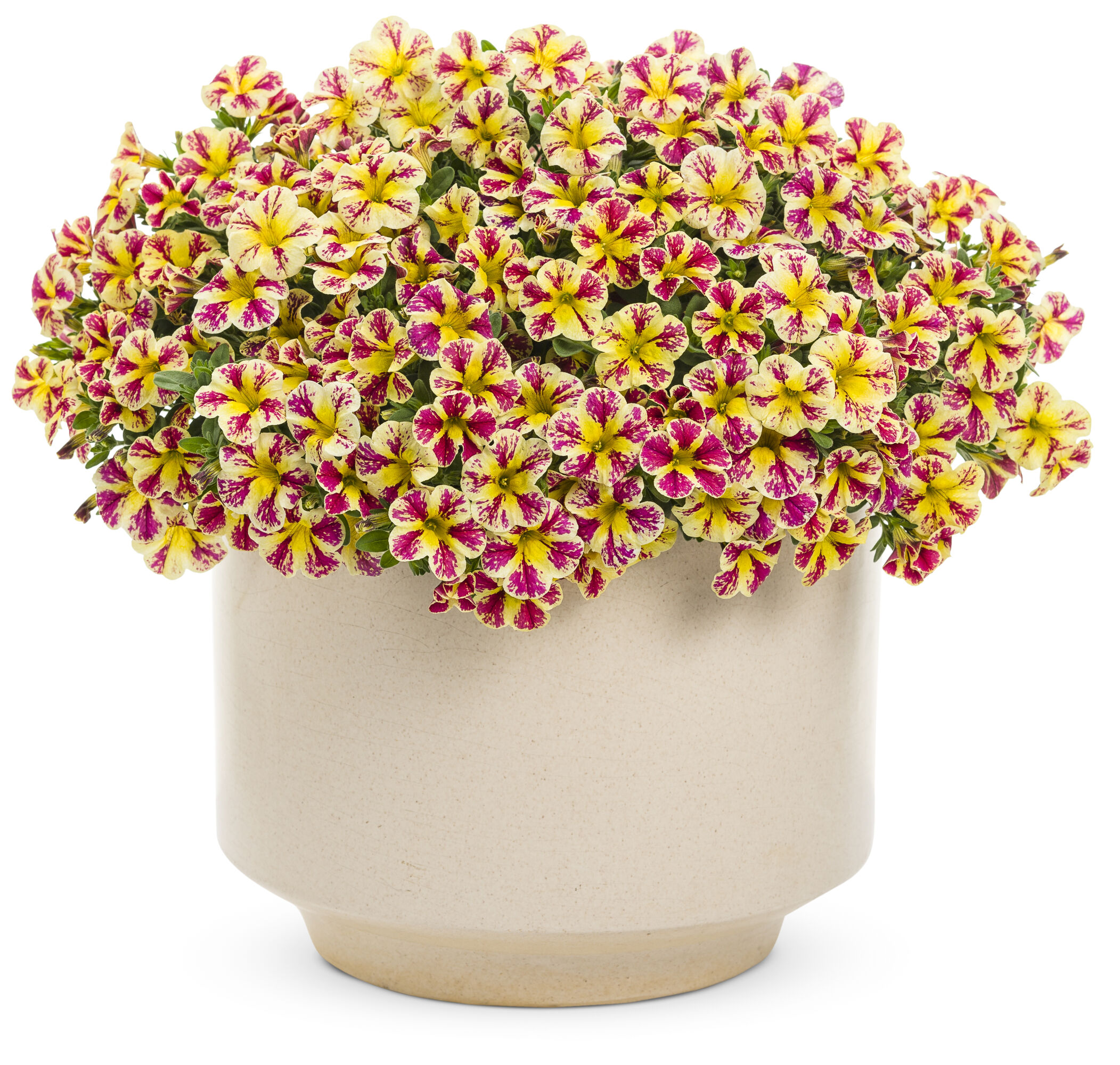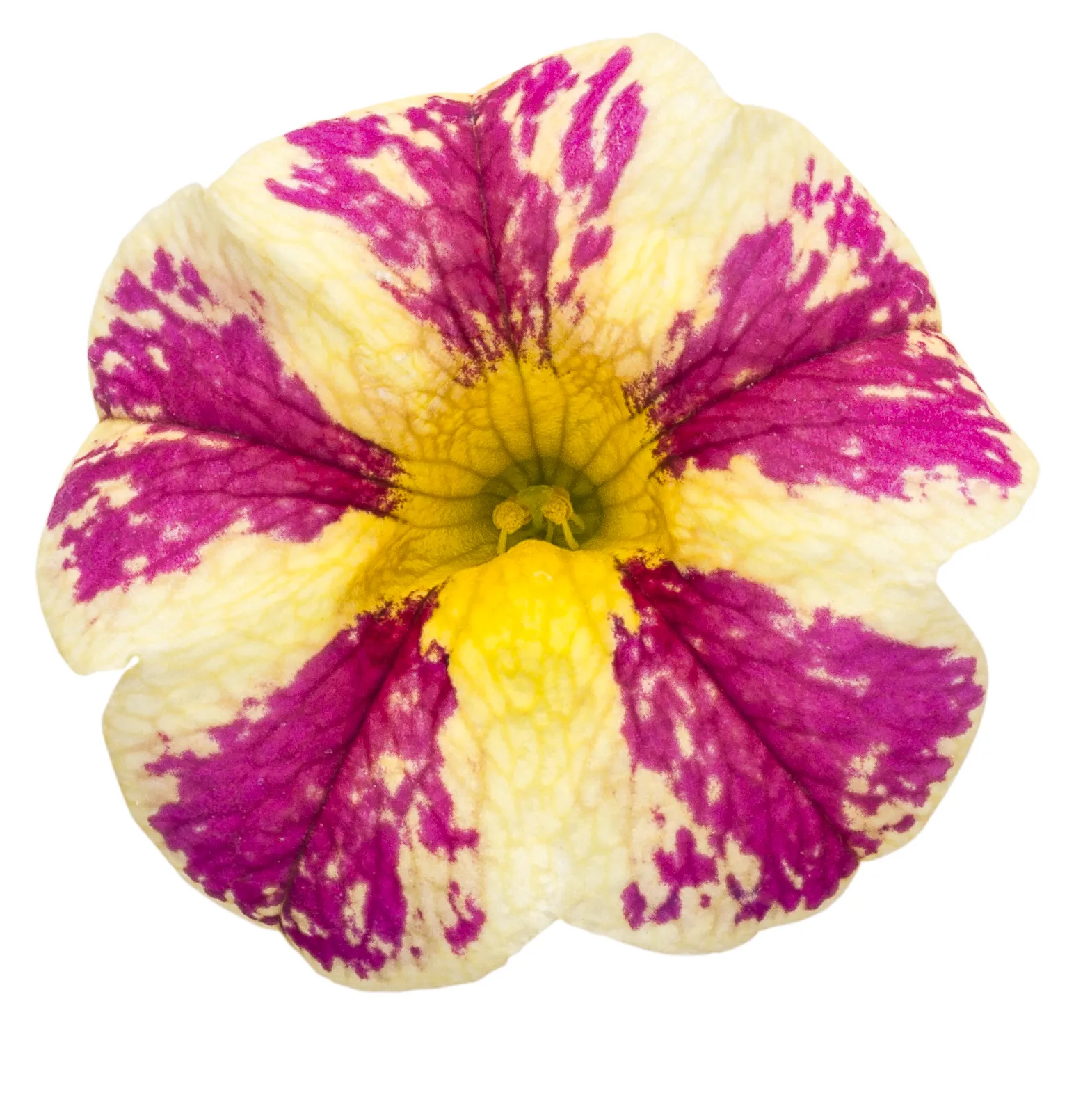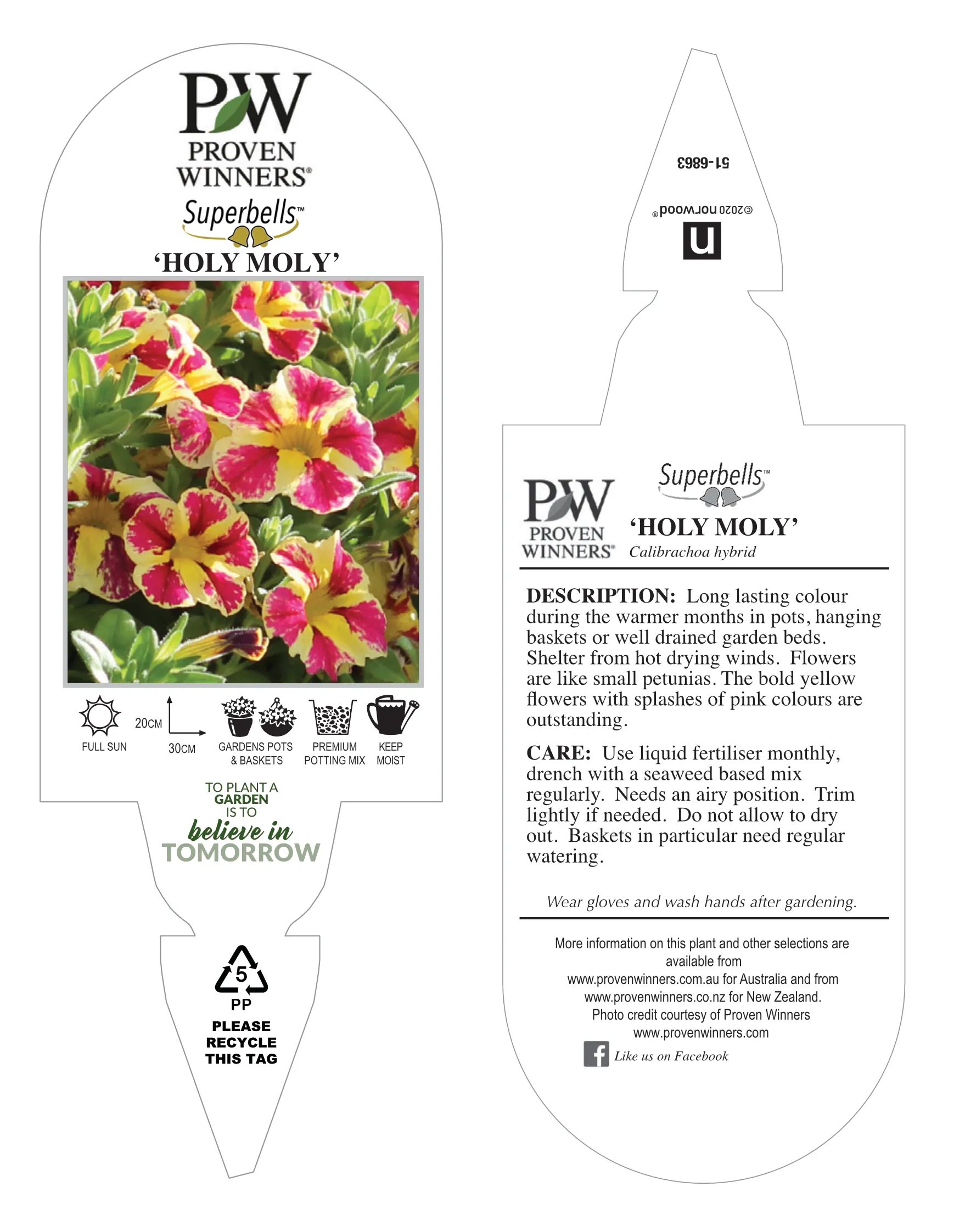
Abundant, small petunia-like flowers all season long on cascading growth. The blooms are outstanding with bold yellow petals and showy splashes of bright pink.

Available in AustraliaAvailable in New ZealandFind a Retailer





Calibrachoa Superbells® offer a selection of stunning and distinctive bright colours to choose from and are a popular choice for gardens and pots. Calibrachoa Superbells® are all bred to perform for the gardener long after they leave the growers care. All Calibrachoa Superbells® are bred for hardiness against root rot diseases and outperform other series in the market place. This line up performs from late Winter until well into the following Autumn.
Calibrachoa Superbells® look superb in containers or hanging baskets on a patio, deck or in a courtyard or planted in the garden. Superbells® are the ideal plant for adding long lasting potted colour highlights to the low-maintenance ‘outdoor room’.
Calibrachoa do well in the ground with good drainage, they do not like to have constantly damp soil. The cascading habit will see them spill over the edge of the container to produce a waterfall of colour.
Proper watering is the key to growing Superbells®. Calibrachoa can be fantastic in-ground plants, but only if they are planted in well-drained soil in raised beds. Never allow the roots to get too wet, allow the top of the soil to dry before watering again.
Plant in part sun to full sun area, Calibrachoa Superbells® are low maintenance with no deadheading needed. An application of fertiliser or compost on garden beds and regular fertilisation of plants in pots will help ensure the best possible performance.
The first plants of Calibrachoa were taxonomically described only in 1989. The first cultivars were released to market in 1992. The original plants were found in coastal areas clinging to rocks and surviving in some pretty harsh conditions. They so much resembled Petunias that they were originally referred to as ‘Seashore Petunias’. The family tree of this genus reaches deep into South America, almost all species found in Argentia, Brazil and Uruguay. There are 25 known species. Breeding is complex as all varieties are not compatible.
Wear gloves & wash hands after gardening.

